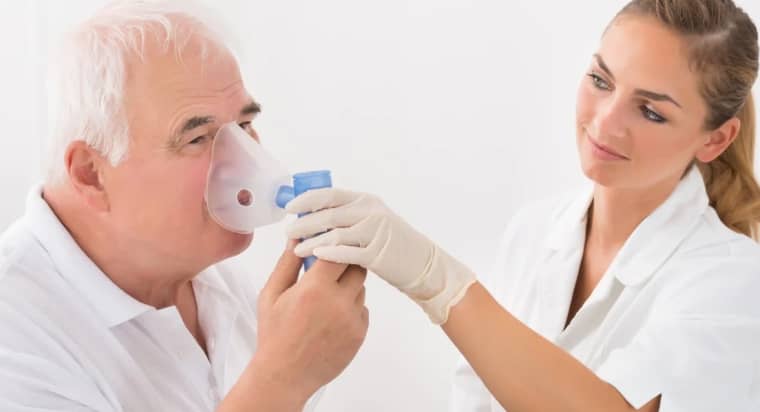Pulmonary diseases affect millions of people worldwide and can significantly impact a person’s quality of life. In this guide, we’ll discuss some of the most common pulmonary diseases, their causes, symptoms, and treatment options. Read on!
- Asthma
Asthma is a chronic respiratory disease that affects the airways in the lungs. It causes inflammation and narrowing of the airways, making it difficult to breathe. Common triggers of asthma include allergies, exercise, and exposure to irritants such as smoke and pollution.
Symptoms
- Wheezing
- Coughing
- Chest tightness
- Shortness of breath
Treatment Options
- Bronchodilators: These medications help to relax the muscles around the airways, making it easier to breathe.
- Inhaled Corticosteroids: These medications reduce inflammation in the airways, helping to prevent asthma attacks.
- Avoiding Triggers: It’s important to identify and avoid triggers that can worsen asthma symptoms. This may include avoiding allergens, exercising in a controlled environment, and avoiding exposure to smoke and pollution.
- Chronic Obstructive Pulmonary Disease (COPD)
COPD is a progressive lung disease that makes it difficult to breathe. It is usually caused by long-term exposure to irritants such as tobacco smoke, air pollution, and workplace dust and chemicals. If you are wondering about how to manage COPS symptoms, it is important that you are able to recognize them.
Symptoms
- Chronic cough
- Shortness of breath, especially during physical activity
- Wheezing
- Chest tightness
- Frequent respiratory infections
- Lack of energy
Treatment Options
There are various treatment options for COPD. If you have been thinking about how to manage COPD symptoms, these are some helpful suggestions. However, it would be best to speak to a medical practitioner for a detailed explanation.
- Bronchodilators: These medications help to relax the muscles around the airways, making it easier to breathe.
- Inhaled Corticosteroids: These medications reduce inflammation in the airways, helping to prevent COPD exacerbations.
- Oxygen Therapy: In severe cases of COPD, oxygen therapy may be necessary to help improve oxygen levels in the body.
- Pulmonary Rehabilitation: This is a program that includes exercise, breathing techniques, and education to help improve COPD symptoms and quality of life.
- Pneumonia
Pneumonia is an infection that inflames the air sacs in one or both lungs, which may fill with fluid or pus. It can be caused by bacteria, viruses, or fungi.
Symptoms
- Cough, with or without mucus
- Fever
- Fatigue
- Shortness of breath
- Chest pain
Treatment Options
- Antibiotics: If the pneumonia is caused by bacteria, antibiotics can help to clear the infection.
- Antiviral Medications: If the pneumonia is caused by a virus, antiviral medications may be prescribed.
- Oxygen Therapy: In severe cases of pneumonia, oxygen therapy may be necessary to help improve oxygen levels in the body.
- Pulmonary Embolism
A pulmonary embolism occurs when a blood clot forms in the veins of the legs or pelvis and travels to the lungs, blocking blood flow. This can cause serious damage to the lungs and other organs.
Symptoms
- Sudden shortness of breath
- Chest pain, especially when breathing deeply or coughing
- Rapid heartbeat
- Dizziness or lightheadedness
- Coughing up blood
Treatment Options
- Blood Thinners: These medications help to prevent blood clots from forming or getting larger.
- Clot Busters: In some cases, medications can be used to dissolve blood clots quickly.
- Surgery: In severe cases, surgery may be necessary to remove the blood clot.
- Pulmonary Fibrosis
Pulmonary fibrosis is a condition in which the lung tissue becomes damaged and scarred, making it difficult to breathe. The cause of pulmonary fibrosis is often unknown, but it can also be caused by exposure to toxins, certain medications, infections, and autoimmune diseases.
Symptoms
- Shortness of breath, especially during physical activity
- Chronic dry cough
- Fatigue
- Unexplained weight loss
- Chest discomfort or pain
Treatment Options
- Medications: Corticosteroids and other medications can help to reduce inflammation in the lungs.
- Oxygen Therapy: In severe cases of pulmonary fibrosis, oxygen therapy may be necessary to help improve oxygen levels in the body.
- Pulmonary Rehabilitation: This is a program that includes exercise, breathing techniques, and education to help improve pulmonary fibrosis symptoms and quality of life.
- Pulmonary Hypertension
Pulmonary hypertension is a type of high blood pressure that affects the arteries in the lungs and the right side of the heart. One of the popular questions we get around pulmonary diseases is on the causes and treatment of pulmonary hypertension in adults. Well, pulmonary hypertension can be caused by a variety of factors, including genetics, lung diseases, and heart defects.
Symptoms
- Shortness of breath, especially during physical activity
- Fatigue
- Chest pain or pressure
- Swelling in the legs and ankles
- Bluish lips or skin
Treatment Options
- Medications: There are several medications available to help manage pulmonary hypertension, including vasodilators, anticoagulants, and diuretics.
- Oxygen Therapy: In some cases, oxygen therapy may be necessary to help improve oxygen levels in the body.
- Surgery: In severe cases, surgery may be necessary to repair or replace damaged blood vessels in the lungs.
If you or a loved one is experiencing any symptoms of pulmonary disease, it’s important to seek medical attention as soon as possible. With early detection and proper treatment, many pulmonary diseases can be managed effectively, improving quality of life and reducing the risk of complications.
If you’re wondering how to manage COPD symptoms or other pulmonary diseases or you’re looking for a pulmonary hospital with experienced and compassionate healthcare professionals, we invite you to visit us at the Pulmonary Clinic of the Carolinas. Our team of experts is dedicated to providing high-quality care for patients with pulmonary diseases. Contact us today to schedule an appointment.



 Translate
Translate

